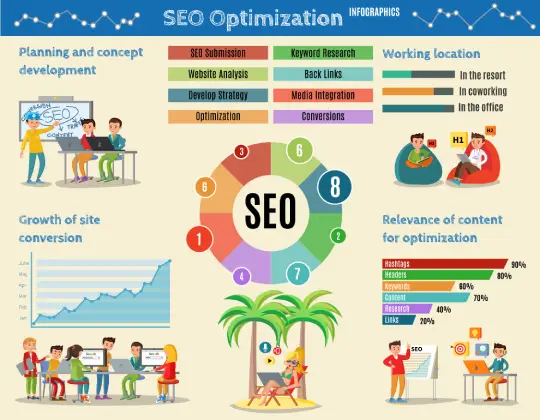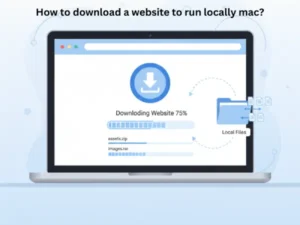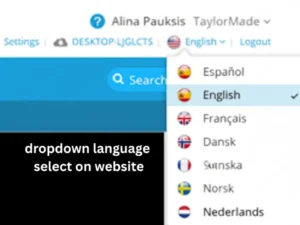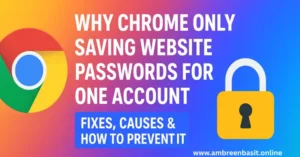If you’ve been hearing the buzz about topical maps in SEO, you’re not alone.
Google in 2025 is smarter than ever. It no longer wants websites stuffed with random keywords. Instead, it rewards websites that show depth of knowledge around a topic.
That’s where Ben Stace, often called a topical map expert, comes in. His strategies help businesses organize content like a library, where everything is neatly arranged and connected.
This guide explains who Ben Stace is, what topical mapping means, how to build your own, and why it’s key to long term SEO growth.
Grab a cup of tea ☕ let’s break this down step by step.
What is Topical Mapping?
Think of a topical map like a city map.
The big highways are your main topics (pillar pages).
The smaller roads are subtopics (cluster articles).
Together, they guide visitors exactly where they need to go.
In SEO, topical mapping is about organizing your content so search engines (and readers) can see you as an expert. Instead of writing random blogs, you build a connected content ecosystem.
For example, if you run a fitness blog:
Pillar page = “Complete Guide to Home Workouts”
Cluster pages = “10-Minute Morning Routine,” “Best Dumbbell Exercises,” “Bodyweight Training for Beginners”
This structure shows Google that you’re not just dabbling you own the topic. According to HubSpot, this cluster model is one of the most effective ways to boost topical authority.
What is a Topical Authority Map?
A topical authority map takes this one step further. It’s like the master blueprint of your site’s expertise.
Imagine drawing a big circle with the main topic in the middle. From there, you branch out into every angle people search for:
- “How to…” guides
- Comparisons
- Common questions
- Advanced tips
This is where Ben Stace shines. He doesn’t just create a list of keywords. He builds authority maps that mirror real world search behavior.
The result? Google sees your site as the “go-to” place on the subject.

Who is Topical map expert Ben Stace?
Ben Stace started as a developer but quickly became known for his work in semantic SEO and topical mapping. He trained under Koray Tuğberk GÜBÜR, one of the pioneers in topical authority, but soon built his own approach.
What makes Ben different is how practical and tool-driven his methods are. He developed tools like:
- Semantic SEO Writer → Helps create structured, entity-rich articles.
- Semantic Scan → Finds missing topics and gaps in your content.
Clients often call him a topical map expert because he doesn’t stop at theory. He builds actual maps for websites that lead to higher rankings, more clicks, and stronger online presence.
How to Create a Topical Map (Step-by-Step)
Here’s the good news you don’t need to be Ben Stace to start. Anyone can create a simple topical map for their niche.
Let’s walk through it with an example. Suppose you run a pet care blog.
Step 1: Research Topics
Use tools like AnswerThePublic, AlsoAsked, or even Google’s “People Also Ask.”
Example queries: “best food for puppies,” “how to train a cat,” “dog vaccination schedule.”
Step 2: Pick Pillar Topics
Choose broad themes. For pets, it could be:
- Dog care
- Cat care
- Pet health
- Pet training
Step 3: Break into Clusters
Under “Dog care,” your clusters could be:
- “Best food for small dogs”
- “How often should I walk my dog?”
- “Dog grooming at home”
Step 4: Plan Interlinking
Link the cluster pages back to the main pillar page. Use natural anchor text like “check our complete dog care guide.”
Step 5: Add Schema + Entities
Add structured data (FAQ schema, Article schema). Mention real-world entities like pet food brands or vet organizations to boost trust.
And there you have it a mini topical map!

What is a Topical Map to Write a Summary?
A topical map is also a summary of your entire content plan.
If someone asked, “What does your website cover?” you should be able to show them your topical map. It’s like a bird’s-eye view of your knowledge.
For instance, a travel blog’s map might look like this:
- Europe Travel → France, Italy, Spain
- Asia Travel → Japan, Thailand, India
- Travel Tips → Packing guides, Safety tips, Budget hacks
When you see it on one page, it’s easy to check if something is missing. That’s exactly how Ben Stace uses topical maps to spot gaps and fill them.
How Do I Design My Own Topical Map?
Designing your own topical map doesn’t have to be complicated.
Here’s a simple DIY method:
- Choose your niche (e.g., “healthy recipes”).
- List all subtopics (e.g., vegetarian, gluten-free, quick meals).
- Group by intent → informational, commercial, how-to.
- Draw connections → use free tools like Miro, Notion, or Lucidchart.
- Add real-world entities (brands, experts, tools).
Tip: Start small. Even a map of 15–20 connected articles can make a difference.
Common Mistakes People Make with Topical Maps
Not everyone gets it right the first time. Here are some mistakes to avoid:
- Over-optimizing: Stuffing the same keyword everywhere. Google is smarter now.
- Ignoring intent: Writing what you think is useful, instead of what users are actually searching for.
- Neglecting updates: Topics evolve. If your article is from 2021, it might already be outdated.
- Weak internal linking: If cluster pages don’t link to the pillar, you lose authority.
- Forgetting schema: Without structured data, you may miss out on rich snippets and visibility.
Ben Stace vs. Other Topical Map Experts
Here’s how Ben compares with other well-known names in the SEO world:
| Expert | Approach | Strengths |
|---|---|---|
| Ben Stace | Practical, tool-driven, client-focused | Easy-to-use tools, actionable maps |
| Koray Tuğberk | Research-heavy, academic-style | Deep theory, strong training base |
| MarketMuse/Surfer | AI-driven content gap analysis | Automation, quick insights |
| Kyle Roof | On-page formula testing | Practical experiments, formulas |
This makes Ben unique: he blends human expertise + practical tools, making it easier for businesses to actually implement topical maps.

The Future of Topical Mapping in SEO
Looking ahead, topical maps will only get more important. Here’s why:
- Google SGE (Search Generative Experience): With AI-driven results, Google looks for websites that cover a topic fully.
- Voice Search: People ask longer, conversational questions. Maps help answer them all.
- Entity-first indexing: Google connects knowledge by entities (people, brands, places). Maps naturally fit this system.
Ben Stace’s style regularly updating maps and filling gaps keeps websites future-proof. As Search Engine Land explains, SGE is changing how search results appear, and building strong topical authority is key to staying visible.
Practical Takeaways for Bloggers & Businesses
Here are 5 ways you can apply Ben Stace’s topical map strategies today:
- Think in topics, not keywords. Don’t chase random words build clusters.
- Start with one pillar page. Expand slowly into related clusters.
- Use tools smartly. Free tools + Ben’s style of semantic scanning = stronger maps.
- Write for people first. Keep language friendly and simple.
- Update regularly. A topical map is a living strategy, not a one-time project.
Conclusion
In 2025, topical maps are not optional they’re the backbone of SEO success. And Ben Stace, often called the topical map expert, has shown how to use them effectively.
By creating structured content ecosystems, adding entities, and keeping things updated, he helps websites turn into authorities in their niche.
The good news? You don’t need to hire an expert to get started. With the steps in this article, you can begin building your own topical map today one pillar, one cluster at a time.
Remember: keywords win traffic, but topical maps win trust. And in Google’s eyes, trust is everything.
❓ People also ask
Q1: What is a topical map in SEO?
A topical map organizes your content into main topics and subtopics, helping search engines see your site as an authority.
Q2: Why hire a topical map expert like Ben Stace?
Because he builds structured content ecosystems that improve rankings, authority, and organic traffic.
Q3: Is topical mapping the same as keyword research?
No. Keyword research finds terms, while topical mapping organizes them into a bigger strategy.
Q4: How do I create a topical map myself?
Start with a main topic, list related subtopics, group them, and link them together.
Q5: Does Google really care about topical maps?
Yes. With AI-driven search, Google rewards websites that cover topics fully and in depth.












2 Responses